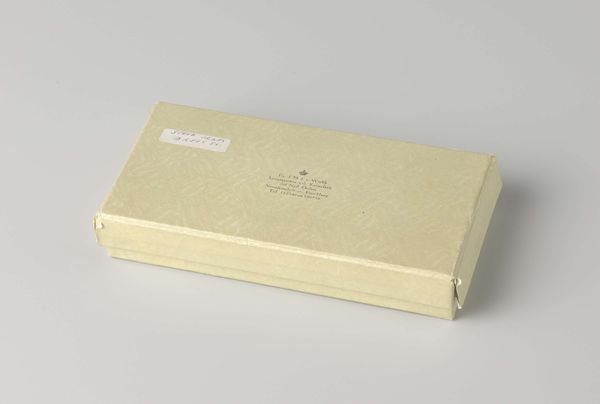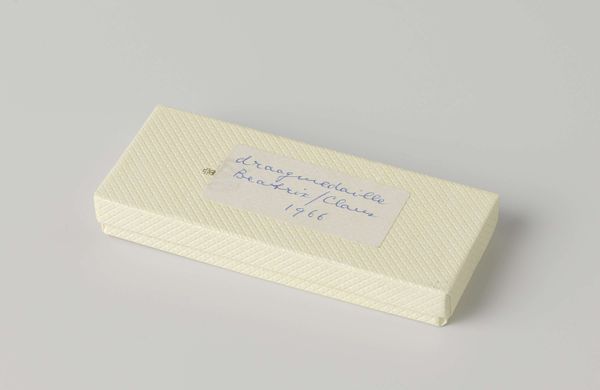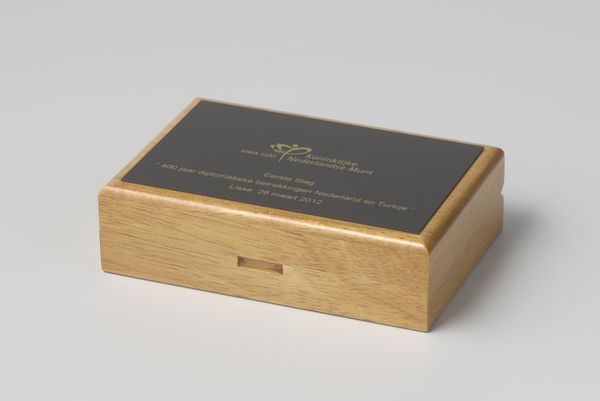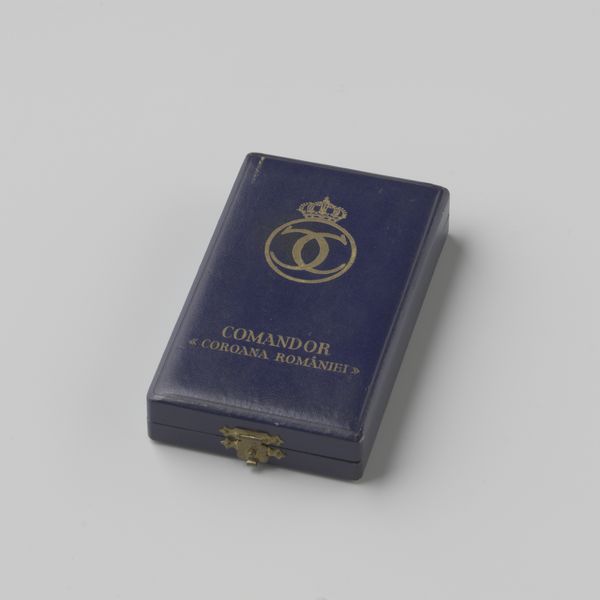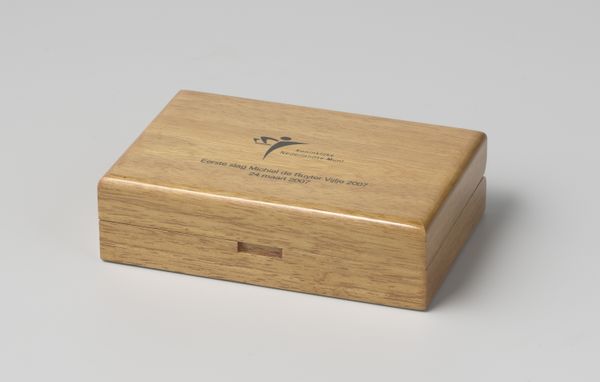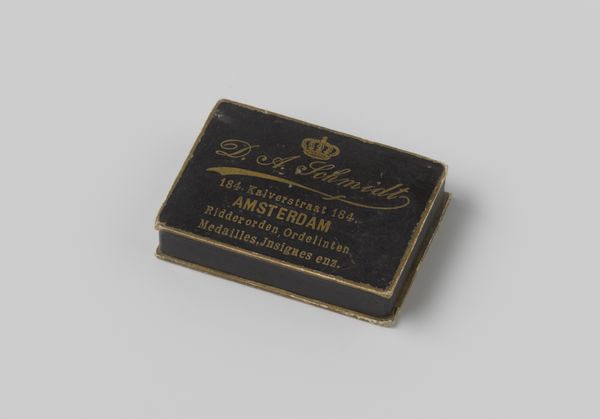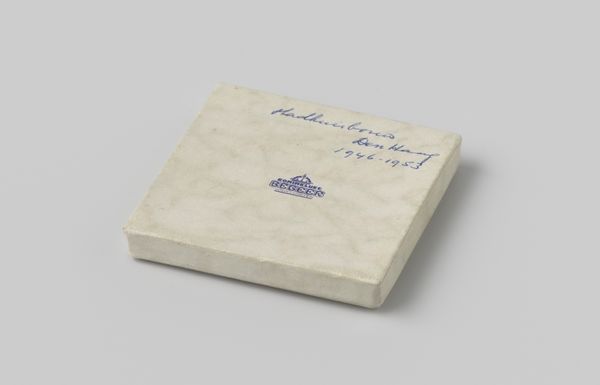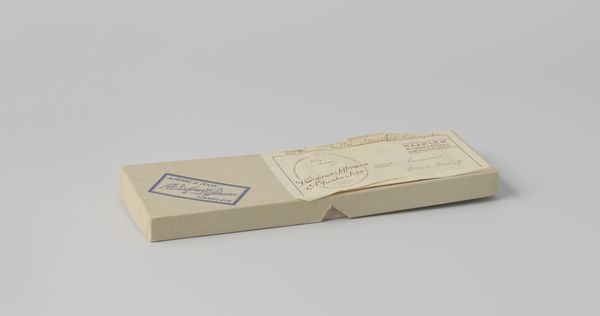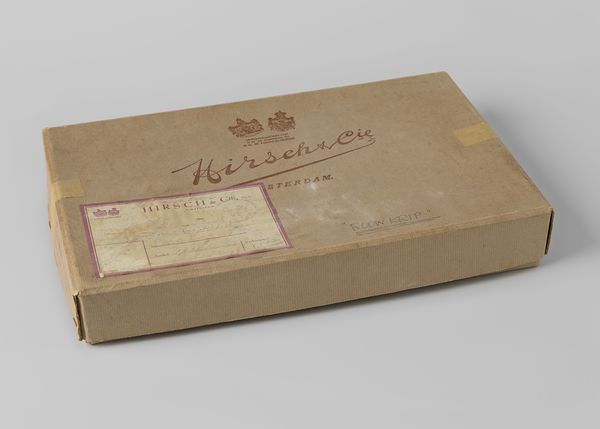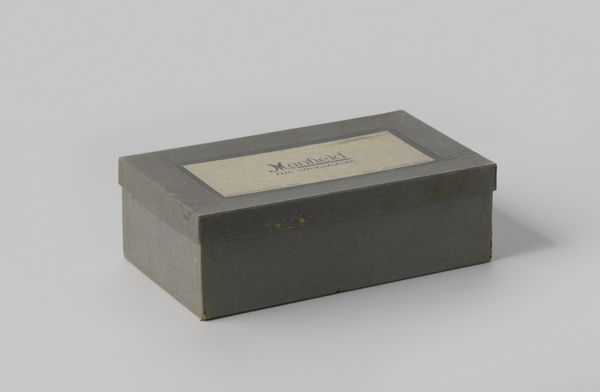
photography
#
studio photography
#
product studio photography
#
product shot
#
still-life-photography
#
studio light photography
#
flat design on paper
#
studio lighting mockup
#
photography
#
letter design
#
metallic object render
#
3d rendered logo
#
foil embossing
Dimensions: height 8.7 cm, width 52 cm, depth 28 cm
Copyright: Rijks Museum: Open Domain
Curator: Well, here we have "Doos met los deksel", or "Box with loose lid," created in 1966 by E.J.F. van Dissel & Zonen. It’s a photograph of a box, residing here at the Rijksmuseum. What’s your initial take? Editor: Stark simplicity. The composition, with its clean lines and soft lighting, speaks volumes despite being…well, just a box. The neutral color palette lends it a certain serenity. But I sense something more, a latent symbolism perhaps? Curator: Indeed. This wasn't just any box. These boxes were commissioned and supplied to H.K.H. Princess Beatrix by N.V. Limonadefabrieken van Dissel, van den Broek & Verhoeven Eindhoven. Consider the historical context—the Dutch monarchy, post-war industrial design, and branding playing out through a mundane object. Editor: The Royal Cipher then is central. The stylized 'BC' crowned lettering…that immediately elevates this simple object. Crowns have symbolized divine right, authority, and legitimacy for centuries. It's not merely a box; it’s a signifier of prestige. Curator: Absolutely. And the photograph itself. Note how studio photography in the mid-20th century aimed for a clinical depiction, devoid of extraneous details. The intent was to highlight the product’s quality and modernity. Here we observe photography employed as a tool of legitimization, where industry literally boxes its reputation within royalty. Editor: I agree, every visual choice is purposeful: the careful lighting to prevent stark shadows; a crisp typeface that’s meant to signify cleanliness. Even the negative space has a story to tell; a sense of ordered affluence, almost suggesting an embrace of modern capitalist aspirations tied directly to the royal house. Curator: That connection to evolving commercial sensibilities underscores a fascinating element within post-war Netherlands—this integration into daily lives by association with respected imagery that supported notions of value. Editor: In a way, a photo of something as simple as this also immortalizes it as well; the box has become much more than it was intended to be. It offers us a portal to consider the history of design itself, our collective fascinations and affections over objects. Curator: Precisely! The object's transformation into artifact lets us decode social cues about branding strategies—illustrating aspirations linked with notions tied intrinsically within imagery through Dutch institutions. Editor: A truly striking object through photographic interpretation! Curator: Indeed.
Comments
No comments
Be the first to comment and join the conversation on the ultimate creative platform.
